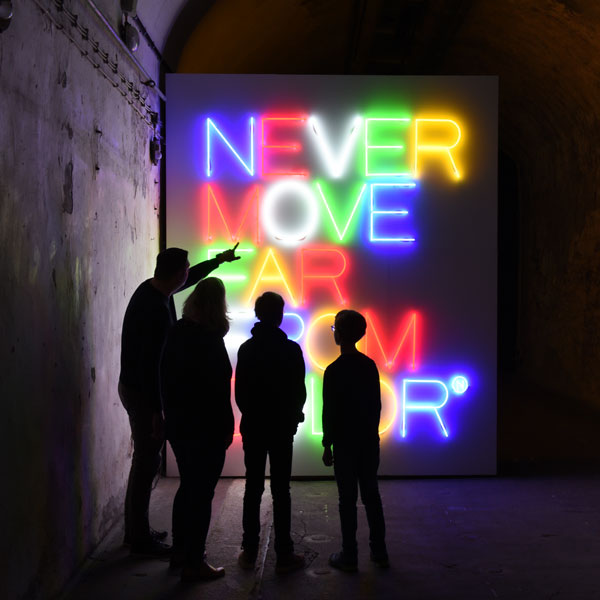Light-Land-Scapes
7 June 2025 – 04 January 2026
Andreas Schmid (DEU) | Jeongmoon Choi (KOR) | Yoana Tuzharova (BGR) | Atelier Rosalie / Thomas Jürgens (DEU)
The site-specific works in the Light-Land-Scapes exhibition interact with the existing surroundings and create a new landscape that only becomes visible through the light. Moving through the light landscapes is like taking a walk at night, where the absence of daylight and the presence of artificial light allows us to see a familiar place with different eyes.
Andreas Schmid's work complex Lichtungen consists of several vertically installed fluorescent tubes of different heights and colours, which rhythmically change their colour and light intensity by means of an electronic control system and seem to sprout from the ground.
The immersive spatial drawings by artist Jeongmoon Choi also focus on the line. She finds a suitable material for her work Floating Horizon in fluorescent threads, which are made visible through the use of black light and thus become a three-dimensional drawing that visitors can enter.
Yoana Tuzharova uses the interaction of light and darkness in a special way in her light and colour landscape Penumbra. She takes darkness as the starting point for her painterly-sculptural environments and creates labyrinthine spaces of coloured surfaces in which the interaction of spectral light and coloured shadows plays a central role.
In the largest single room of the museum, the light sculpture STREAM I. – III. des Ateliers Rosalie | Thomas Jürgens composed of several modular panels, can be seen. A flowing, multi-coloured water of light forms between the rows of pillars along the entire length of the room - the colour, brightness, intensity and rhythm are constantly changing.
Further information (in German) can be downloaded here.









































